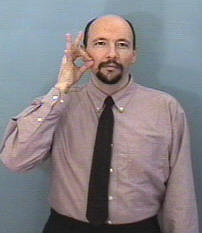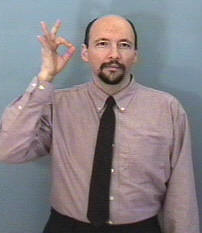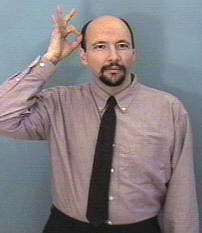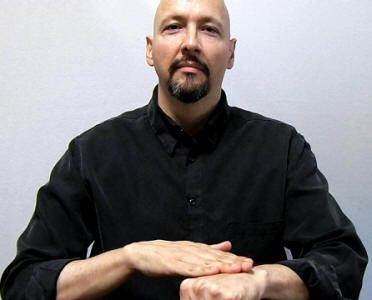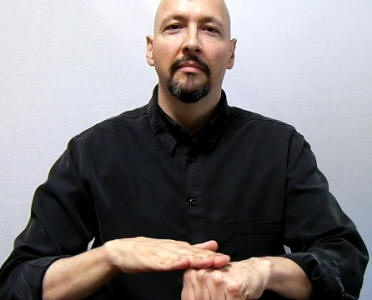American Sign Language:
"Native-American"
There are several versions of signs for "Native American" (and/or "American Indian") currently in use in the American Deaf Community.
Anyone who tells you that they know and are using "the" right sign for "Native American" is only telling you their "opinion" of what is the right sign for "Native American."
If you watch dozens of Youtube videos discussing signs having to do with Native American topics you are going to see several different signs used to refer to "Native Americans." This includes signing being done by Native Americans themselves.
A recommended approach is to strive to use whichever version of the sign for "Native American" that is currently used by the majority of "Native Deaf adults who are skilled at American Sign Language Adults and who are socially active in your local region." Of particular consideration should be any versions being promoted by Deaf Native Americans who are socially active in their community and online.
Lately (2020) I've been seeing a sign that looks like sticking four fingers downward in-between your non-dominant hand's four fingers.
It is like a very casual and quick version of: https://youtu.be/Je7_5ojHZQU However, this sign also means "indigenous" in general and is based on the concept of "roots" penetrating into the earth. Just because a sign "emerges" (shows up and starts spreading) doesn't mean it is going to keep spreading or stay popular.
The fact is many Deaf throughout the Deaf community are still using the ("F"-hand) version of the sign for (American) Indian that was common for many decades:
Native-American ("F"-hand version)
Touch an "F" hand to your cheek, then touch your head higher up and back.
Think of an Indian headdress.
Native-American (version):
Also see these versions:
https://youtu.be/qKaxSgf3Ou0
https://youtu.be/nhmkB7cvhV0
https://youtu.be/Je7_5ojHZQU
Notes:
November 2020:
My thoughts at this point (Nov. 2020) would be for those of you learning (using or teaching) ASL to make sure you know the "F"-hand two-contact (lower cheek [and/or the nose] to upper cheek / side of head / or side of forehead) (feather / headdress) version of the sign. It is a solid choice when signing "Native American" for several reasons:
1. A significant number of Deaf Native Americans (arguably "the majority") know, use, and like the "F"-hand version of the sign.
2. That sign has been around for a very long time.
3. That sign has (arguably) 100% (or nearly so) recognition among Deaf Adult native ASL signers.
4. That sign is listed in every (as far as I can tell) major ASL dictionary that has an entry for the sign.
HOWEVER:
1. Interpreters and others should certainly be able to recognize the other variations of the sign for "Native American."
2. "Deaf Native United" has only posted "one" clip (as of this time), only has 28 subscribers (as of the moment of this comment) and the clip has only been viewed a few thousand times (as opposed to tens of thousands of times).
3. ASL under constant pressure from "activists." Such individuals (or groups) push for changes that they feel are "improvements."
4. With technology these days it is fairly easy to "cherry pick" the internet and find a couple dozen versions of any particular variation of a sign and cobble together an impressive-looking video and post it under any impressive-seeming "group name" you would like. Thus even though a couple dozen Deaf Native Americans appear in a video uploaded by some (anonymous) person with a preference for a specific sign version -- still doesn't mean that particular sign will remain dominant for any length of time. It also doesn't mean that there are not other versions out there that may be becoming more and more popular over time.
For example, "this" video clip is considerably more recent than the Deaf Native United video:
Source: https://youtu.be/pvRh3TZcTgE?t=98
That more recent video shows Sarah Young Bear Brown (of the Meskwaki Tribe and who (as of 2020) lives at the Meskwaki Settlement in Iowa) using the "face paint" version of "Native American."
That particular clip (including the facepaint version of "Native American") has been viewed approximately twice as much as the "Deaf Native United" clip. Sarah Young Bear Brown is the Vice Chair for Native American Caucus of Iowa Democratic Party and is specifically involved in outreach to Deaf Native Americans.
For what it is worth, I personally would certainly prefer there to only be "one" variation of any particular sign -- it would make my job (as an ASL teacher and lexicographer) much, much easier!
The fact is though -- language changes and evolves.
For more on my views regarding language evolution see:
https://www.lifeprint.com/asl101/pages-layout/teachingasl/teachingasl-bill.htm
(Version) NATIVE-AMERICAN (version) / Native American Sign Language (not recommended, see notes)
Use a double movement.
Notes: While conversing in my office with a transfer student (who was Deaf and a skilled ASL user), I noticed that she did the sign "SURFACE" when referring to "Native Americans" or what was formerly referred to as "American Indians." I asked where she got that sign and she indicated that she learned it from a faculty member at a large university in the Northridge California area. This doesn't mean that the sign is being taught as ASL at that university, it simply means that one person showed it to another person and it is being used in some conversations between some people. The reason why I'm including it here is because I became curious about the sign and I went to an old "Indian Sign Language" dictionary and looked up their sign for "Indian." The original movement of sign for Native American in the "Indian Sign Language" dictionary was not similar to the ASL sign SURFACE, rather the movement was closer to the ASL sign "PET" but with a reversed movement - making two forward strokes (not circular movements as in the sign SURFACE).
It appears that some second language users of the sign have mutated the sign into using a circular movement of the dominant hand. I will be watching to see if others adopt either of these versions to replace the existing ASL sign. The sign is likely to meet with resistance due to looking too much like the existing ASL signs for "SURFACE" and "PET."
Interestingly enough, it is reasonable to state that this is a sign "some" Native Americans use or have used to describe themselves via at least one version of "Indian Sign Language" and at least one published source mentions that this sign is associated with the color of the skin of Native Americans.
In a message dated 3/15/2007 9:25:13 P.M. Pacific Daylight Time, Allie writes:
Dr. Bill,
I thought the sign for Native American changed to NATURE + AMERICA + AGENT to be politically correct.
Do you know if this is true?
-Allie
Allie,
I personally don't plan on using the "NATURE + AMERICAN + AGENT" sign any time soon. For the time being [2007] I still do the old "feather headdress" version.
The incoming "PC" method [2007] was to rub the back of the non-dominant hand twice. ... That is a sign that has been borrowed from "Indian (Native American) Sign Language.
As early as 2006 I met someone who said she saw that way being taught as a variation at Cal State University, Northridge. Plus I looked in a book of "Indian Sign Language" written many years ago and noted that the "rub" method was being used and taught by a Native American.
- Dr. Bill
[2020: Editor note: It is interesting that in 2007 the "rub" version of "Native American" was being promoted by many as "the" right way to sign "Native American." However, that version didn't seem to ever reach widespread usage.]
*
Want to help support ASL University? It's easy:
DONATE (Thanks!)
* Another way to help is to buy something from Dr. Bill's "Bookstore."
* Want even more ASL resources? Visit the "ASL Training Center!" (Subscription
Extension of ASLU)
* Also check out Dr. Bill's channel:
www.youtube.com/billvicars
You can learn American Sign Language (ASL) online at American Sign Language University ™
ASL resources by Lifeprint.com © Dr. William Vicars
